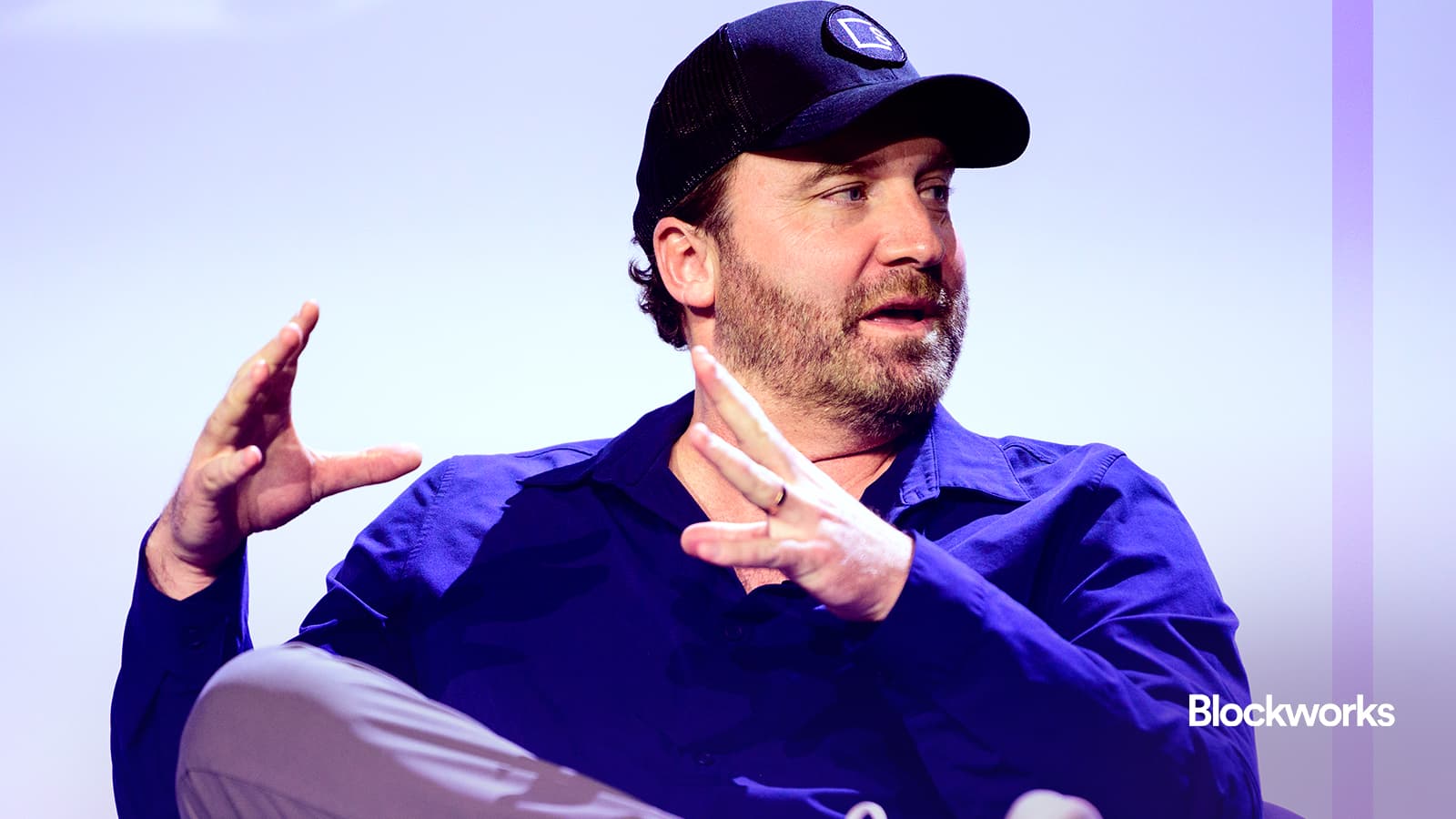Mega VC raises aren’t ‘good for the decentralized efforts’ of crypto
DAS panelists shared strong venture capital takeaways, from how big a raise should be to the role VCs play in the industry

SKALE co-founder Jack O’Holleran | DAS 2025 New York by Mike Lawrence for Blockworks
This is a segment from the Empire newsletter. To read full editions, subscribe.
After watching hours of DAS panels of institutions being bullish on crypto, I have one thought: VC isn’t dead.
I’m somewhat joking, but I think there are some really strong takeaways about the current state of venture capital in crypto.
And they didn’t all come from the venture capitalists themselves!
Take, for example, the Empire round-up filmed live on stage. It featured Avara’s Stani Kulechov, Skale’s Jack O’Holleran and, of course, Santiago Santos and Jason Yanowitz.
One of the topics they discussed was the size of raises today, with Yanowitz asking whether mega-raises — or funding rounds over $150 million — are here to stay (at 1:39:00).
O’Holleran said that huge funding rounds “paint yourself into a corner.”
“ It’s a little counterintuitive thinking, ‘Oh, give me all the cash and more ownership.’ But the reality is we see this in the market today, [that a lot depends on] where that valuation is: if you start here [he gestures at the ceiling] and it just goes here [he gestures at the floor], that’s not a good look. It’s not good for the decentralized efforts of the community,” he added.
O’Holleran said that he actually becomes a “little bit pessimistic” when the mega raises come in, and I get it (though to be clear, I just get more nosy).
It’s honestly why, in my role in the space, I prefer covering smaller raises, which I’m sure y’all have noticed. I don’t always think it’s a bad thing to go out and raise a ton of money if it’s necessary, but I think the smaller raises give you a real inside baseball look at what the firm’s trying to build.
O’Holleran said that he thinks the “right amount” when talking about larger raises would be around $50 million. That makes sense — it’s enough money to have a nice cushion, and it’s not too much money that’ll start “flying around” and not be used well, to O’Holleran’s points.
Kulechov seemed to agree, noting that it’s all about the resources.
The other part of my takeaway comes from a different panel: Do VCs still matter?
Blockworks Research analyst Boccaccio was joined by Dragonfly’s Haseeb Qureshi and 6MV’s Mike Dudas and had the two defend venture capital.
(Sidenote: Whoever put Qureshi on a panel with Dudas deserves all the praise, because those two had so much chemistry it was hard not to be amused.)
While Qureshi (at 1:00:13) very quickly answered the panel’s big question — telling Boccaccio “I’m a VC…I still matter” — I thought Qureshi’s later point that VCs are a resource for the firms they invest in to be an important point — and one, perhaps, that gets lost in the critiques of VC.
Now, I know this sounds overly supportive of VCs. I’m mindful that there are still a lot of reasons to be cautious of how they influence the space and to temp check whether they’re actively helping the industry. This newsletter isn’t seeking to give them a hall pass by any means, just so we’re clear.
Anyway, they talked about the fact that — specific to crypto — folks who got in early on a token or who follow a project closely sometimes demand a token-go-up scenario without always acknowledging the project is working on more than just price action.
“The value of VC is that we get it…we understand what you’re building and we can actually help,” Qureshi noted.
Dudas later noted that the truth is also important when being a crypto VC. As he later put it on X:
Both Qureshi and Dudas cautioned that not all VCs are good VCs — a salient point to remember.
Get the news in your inbox. Explore Blockworks newsletters:
- The Breakdown: Decoding crypto and the markets. Daily.
- 0xResearch: Alpha in your inbox. Think like an analyst.






